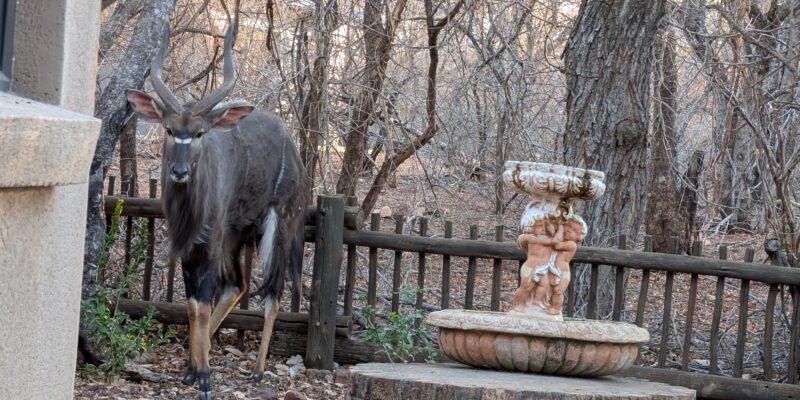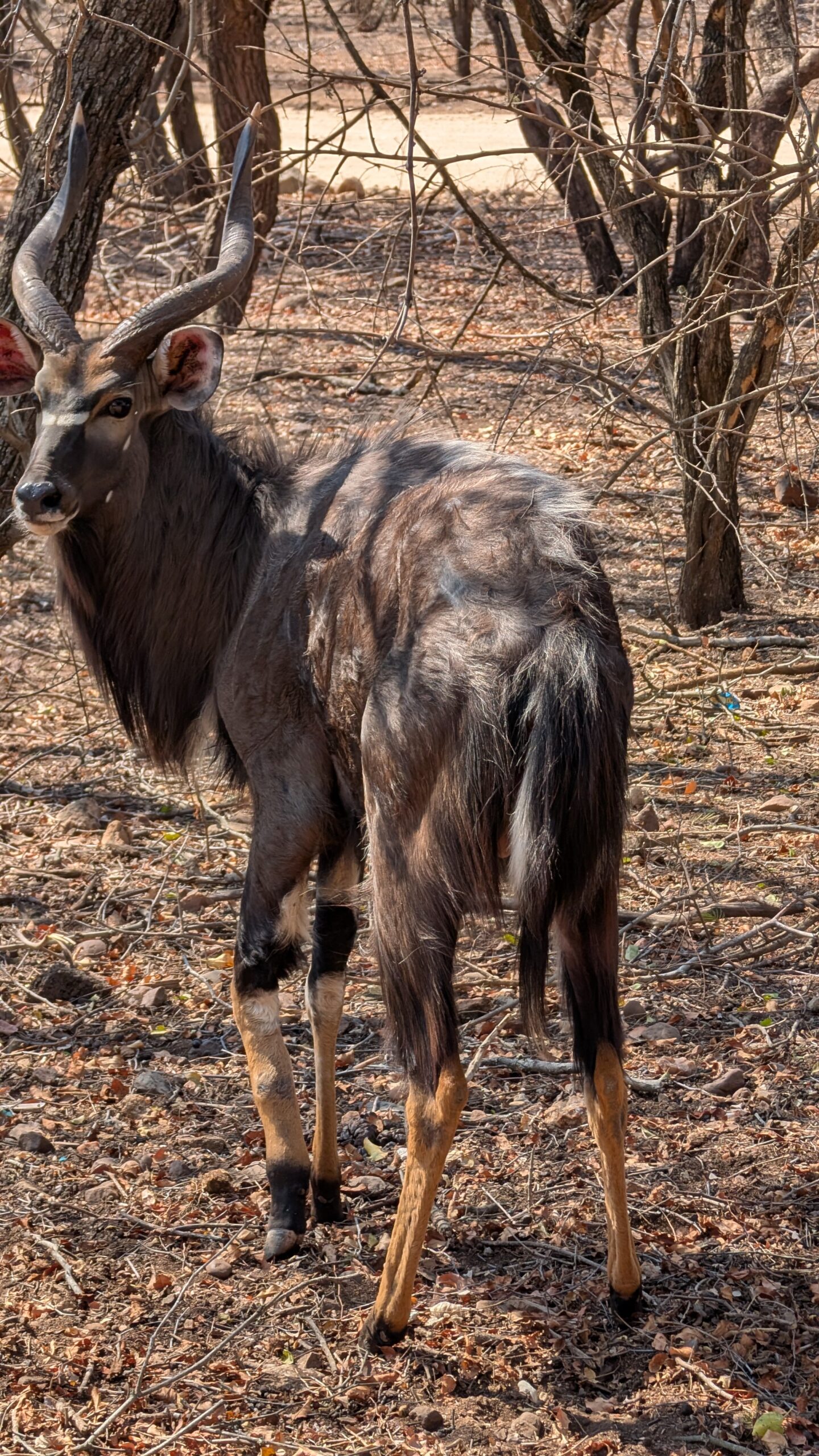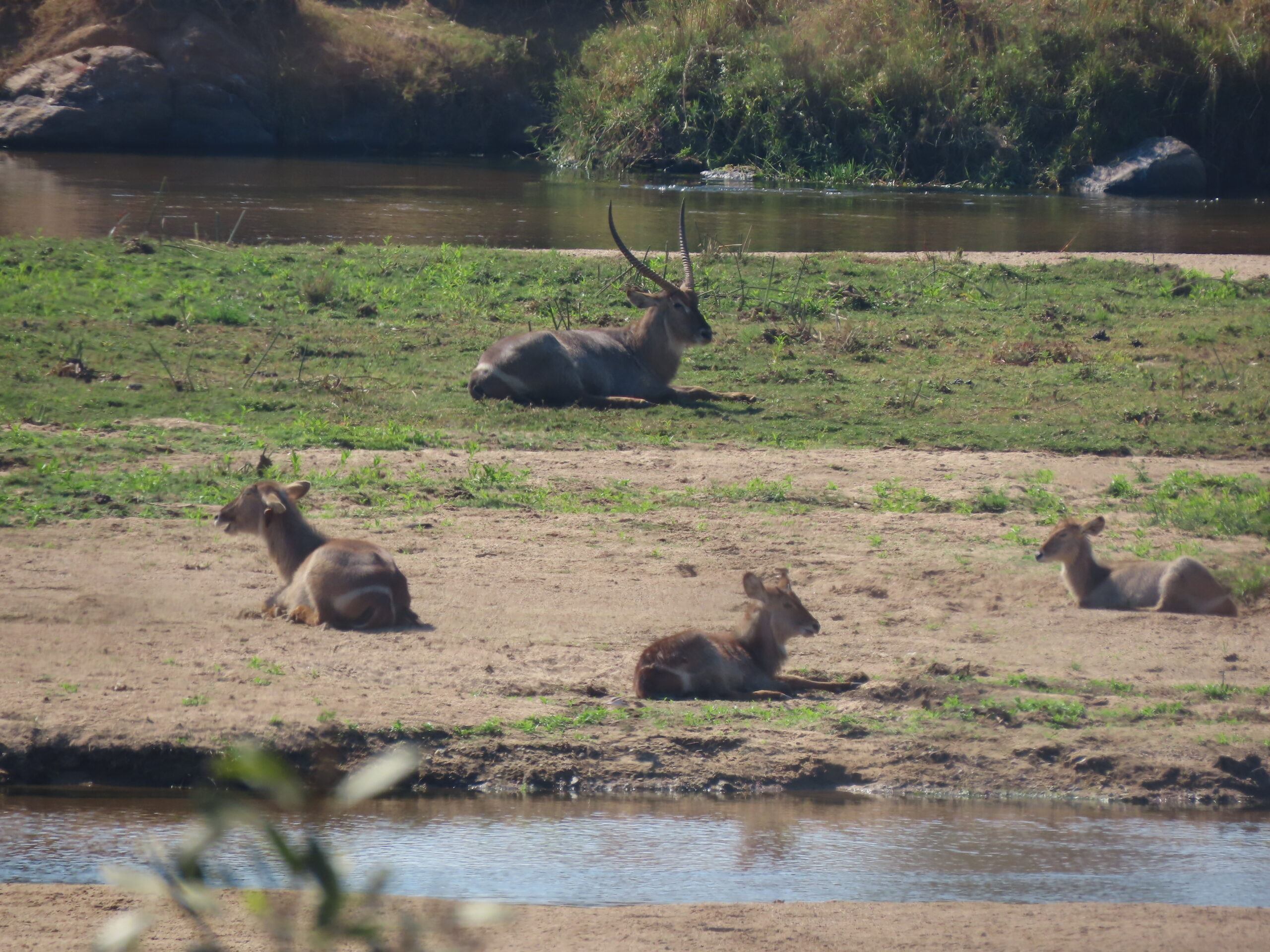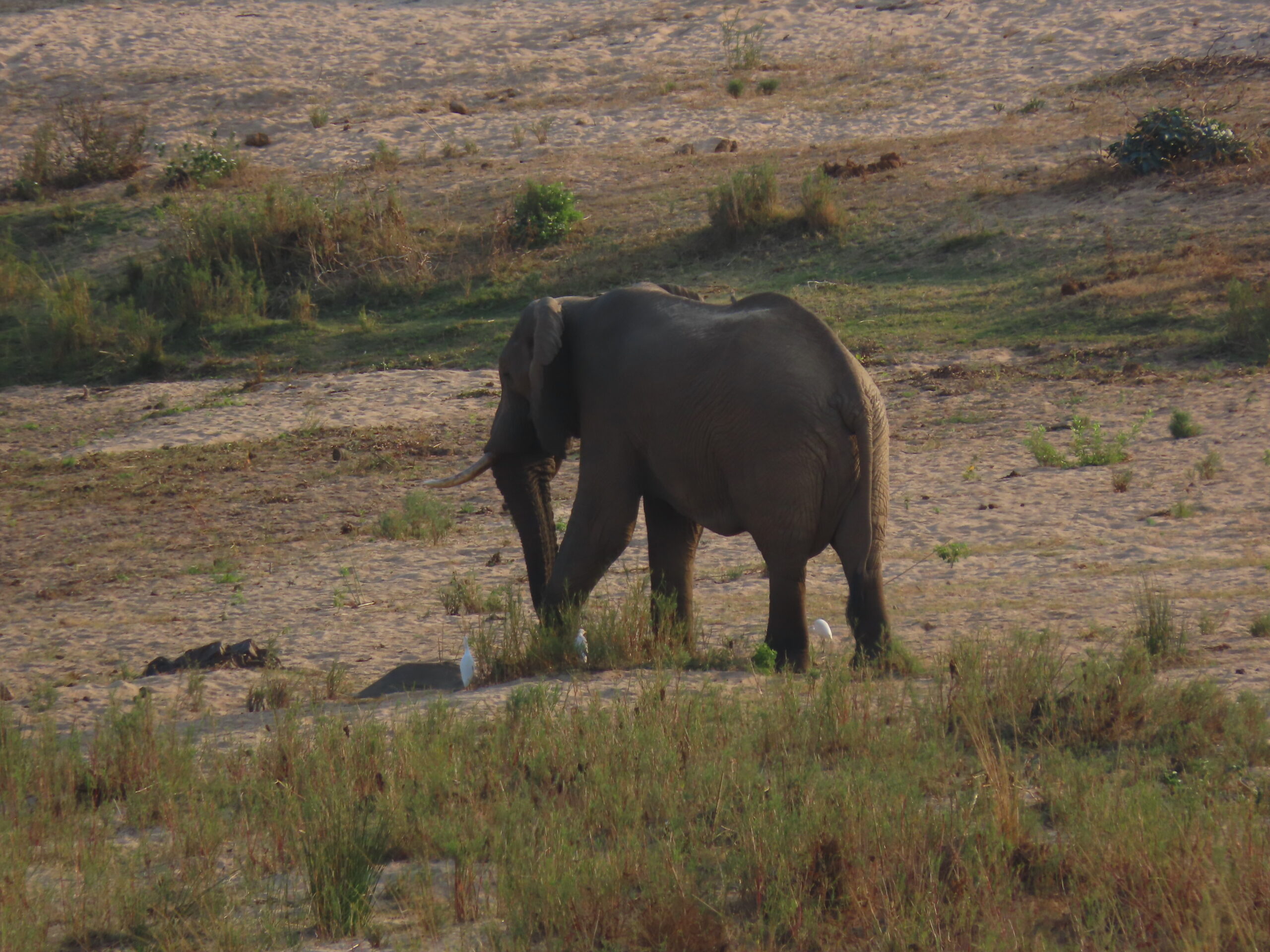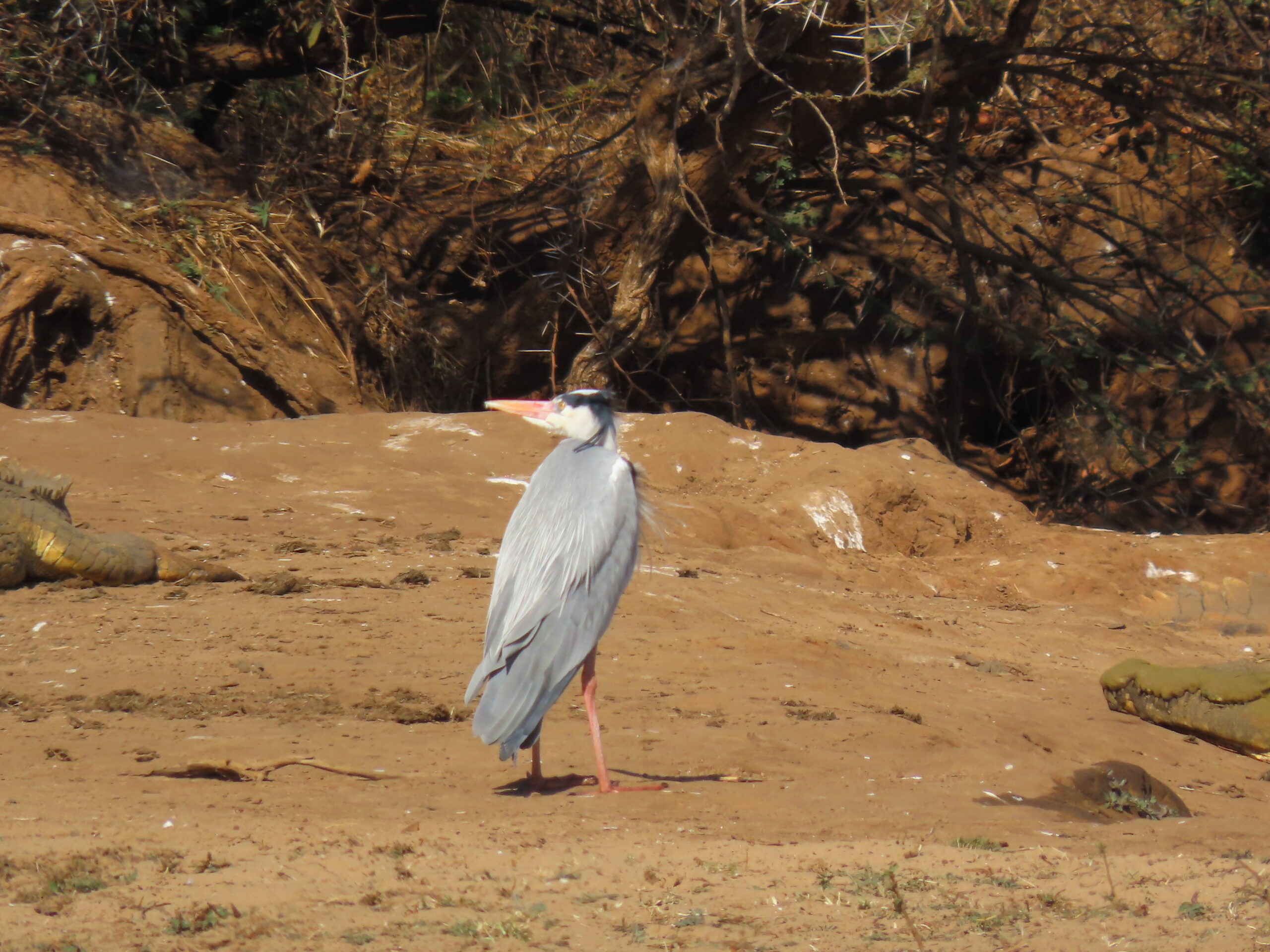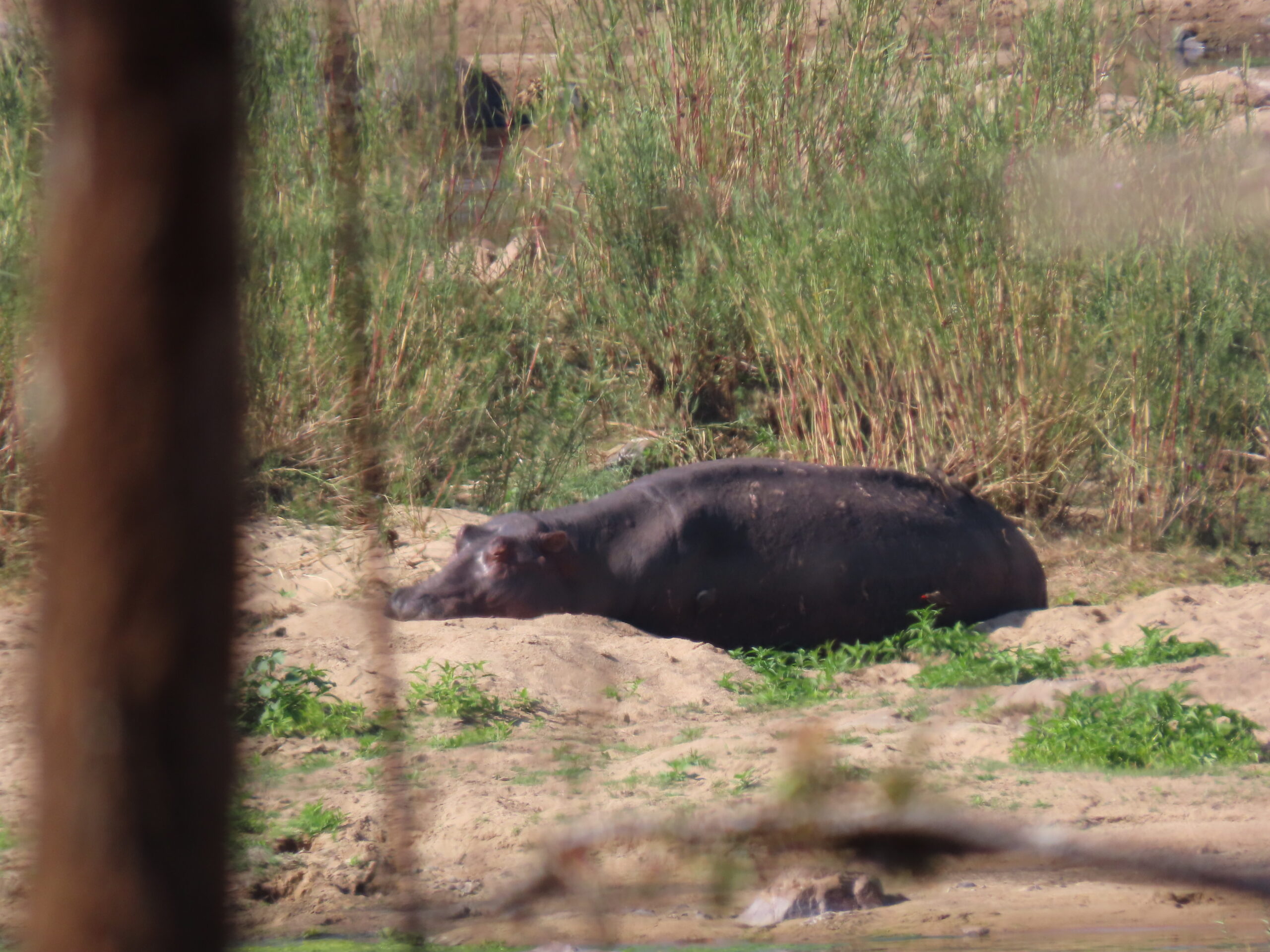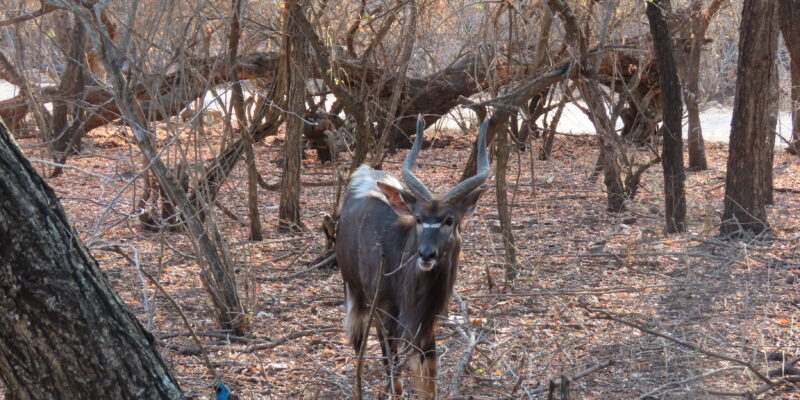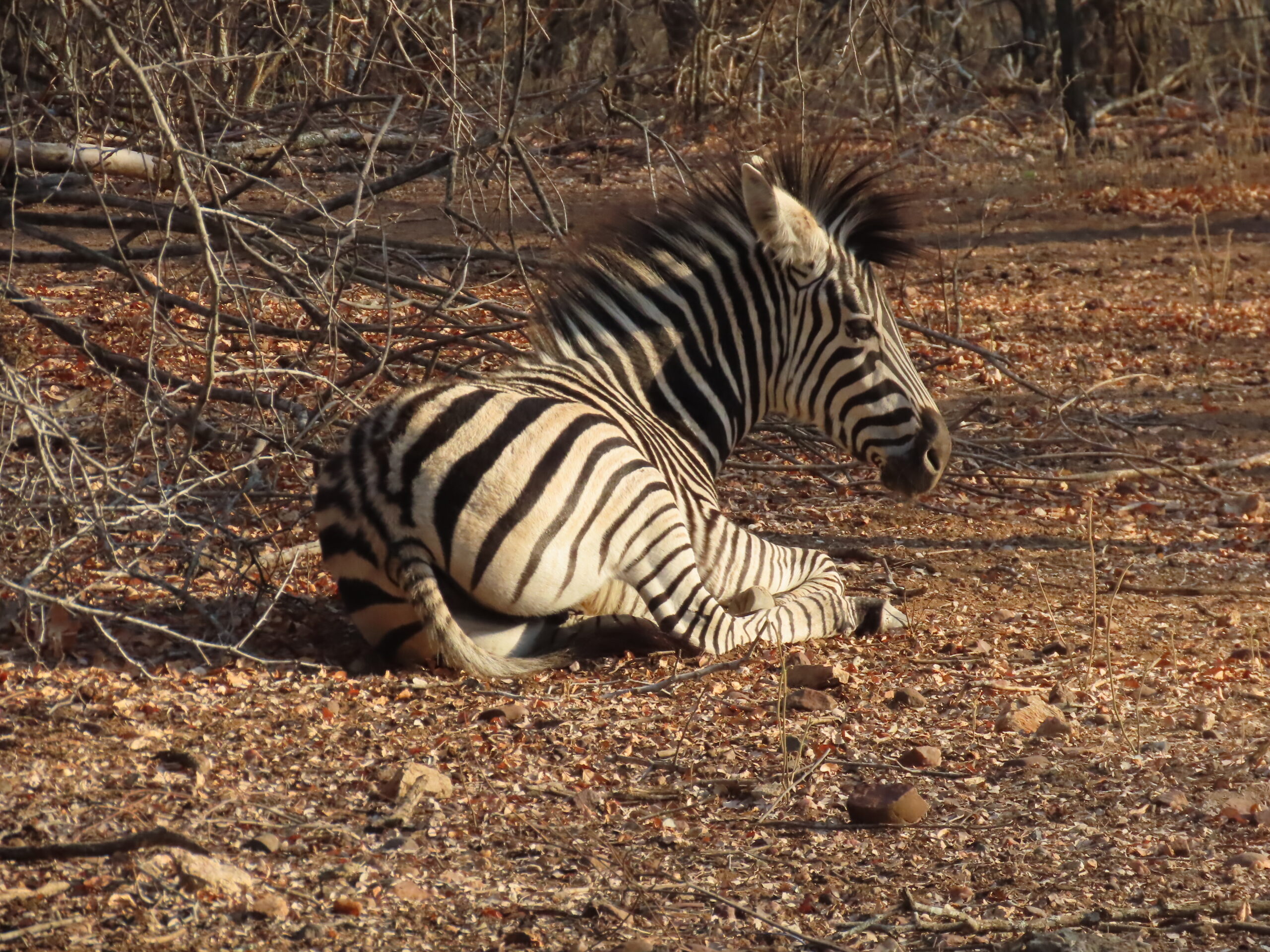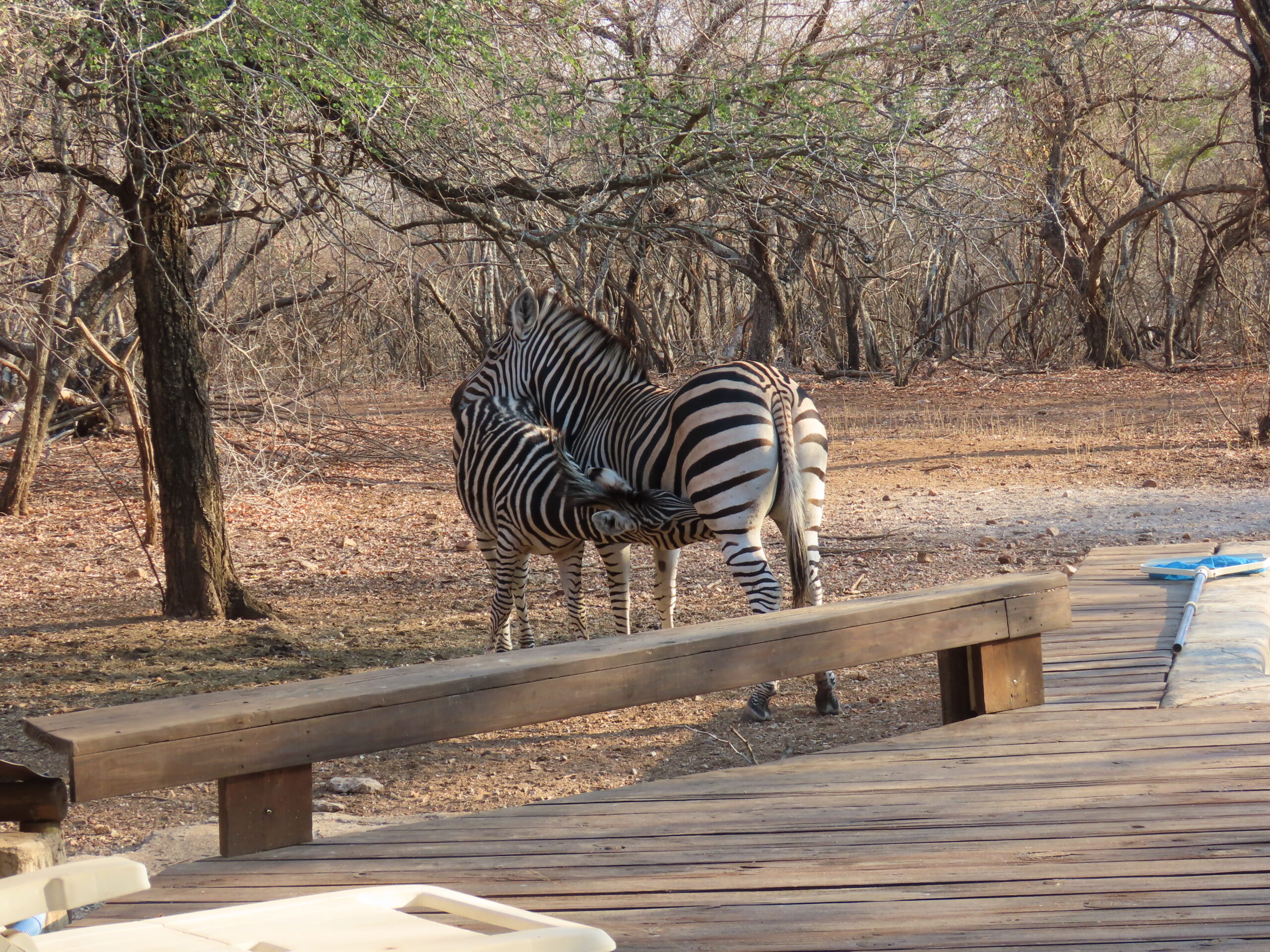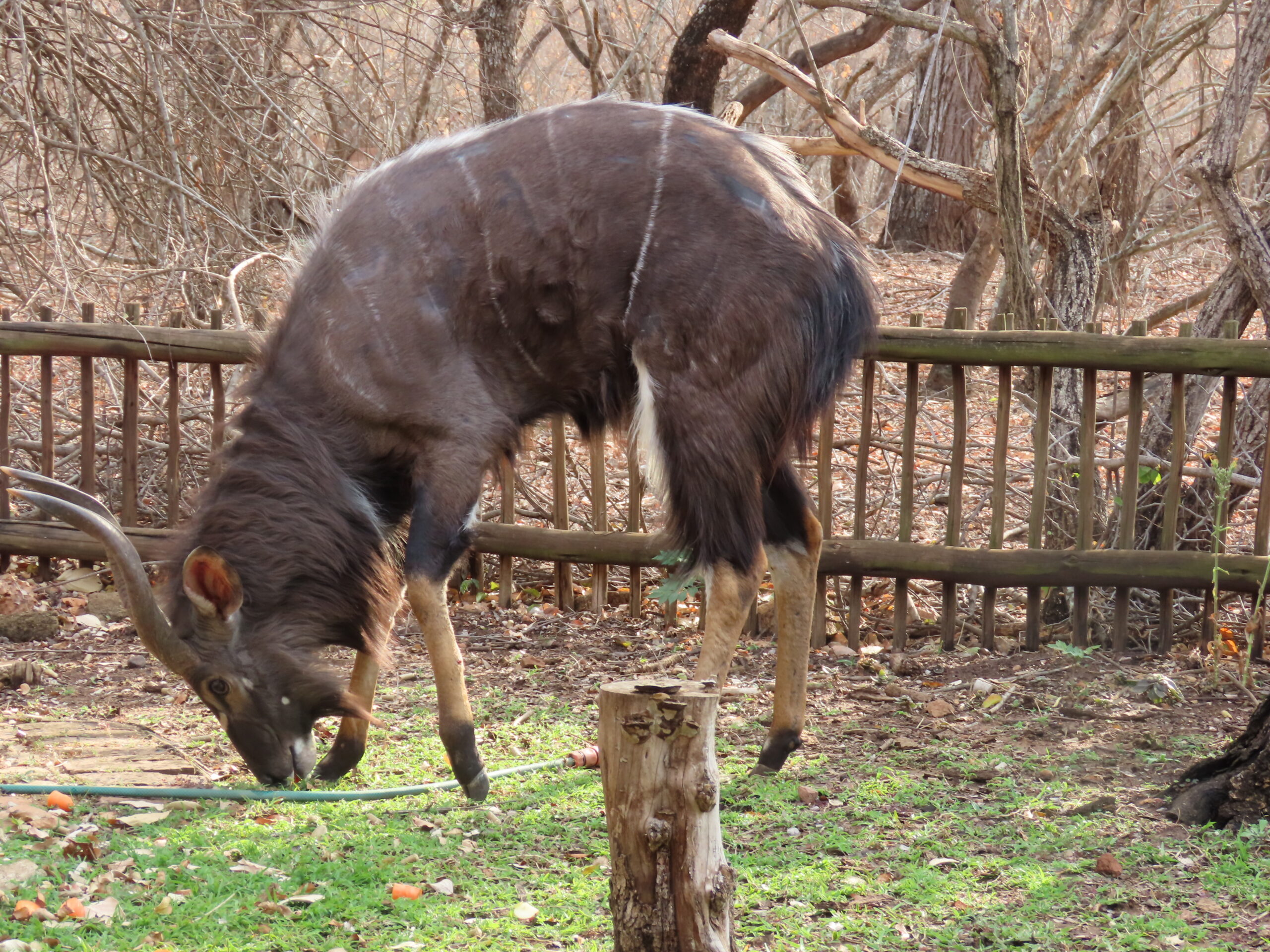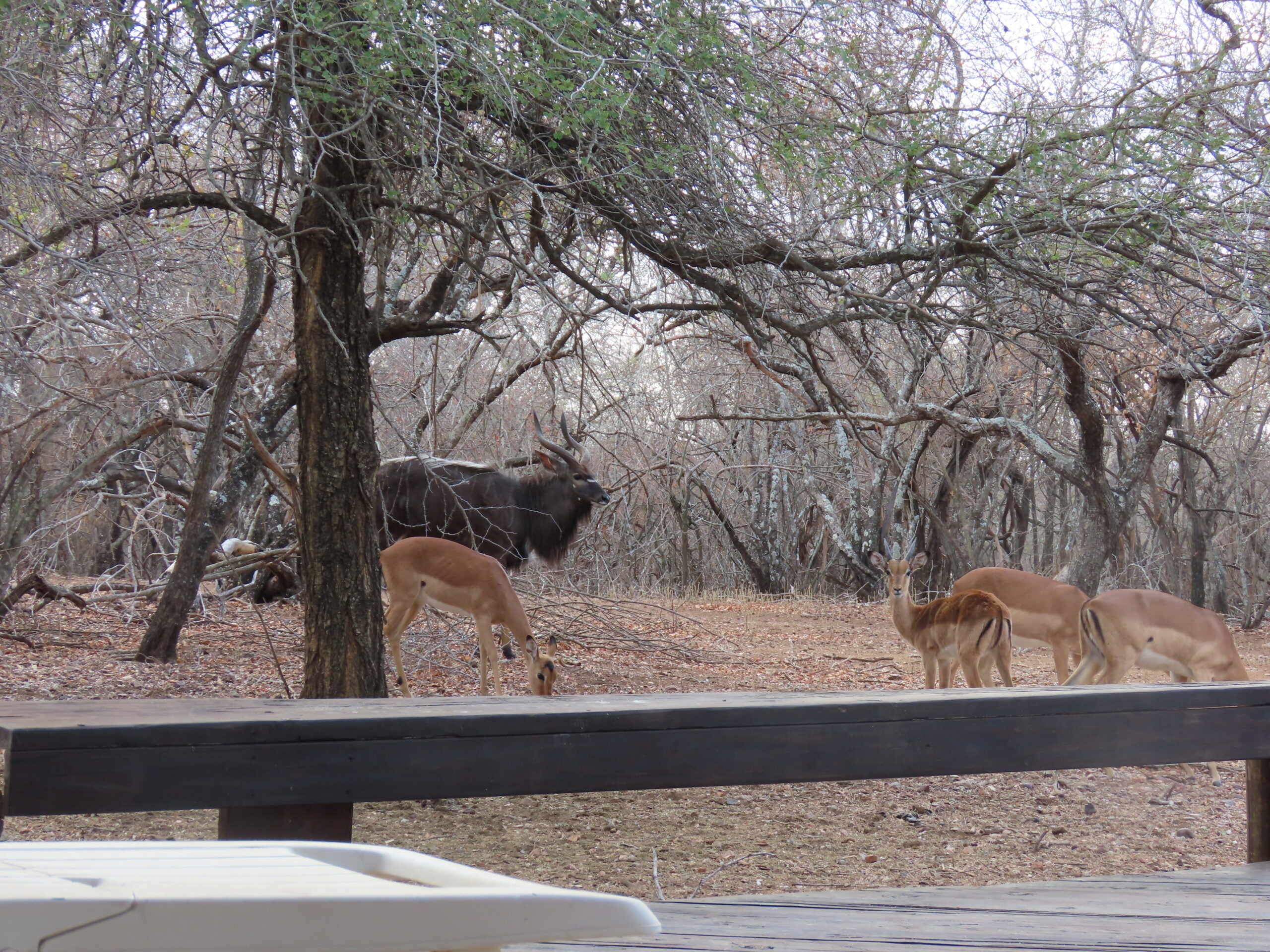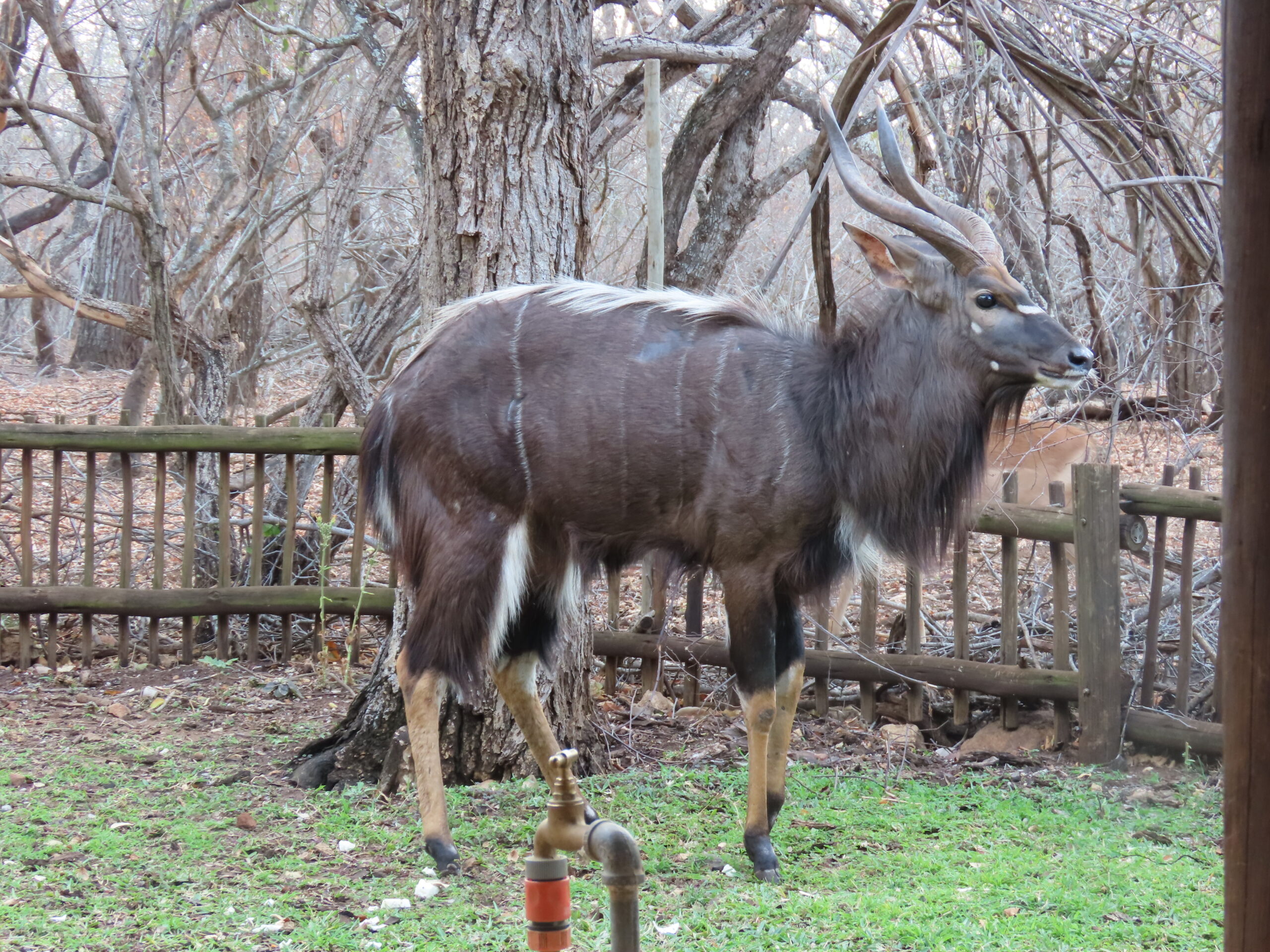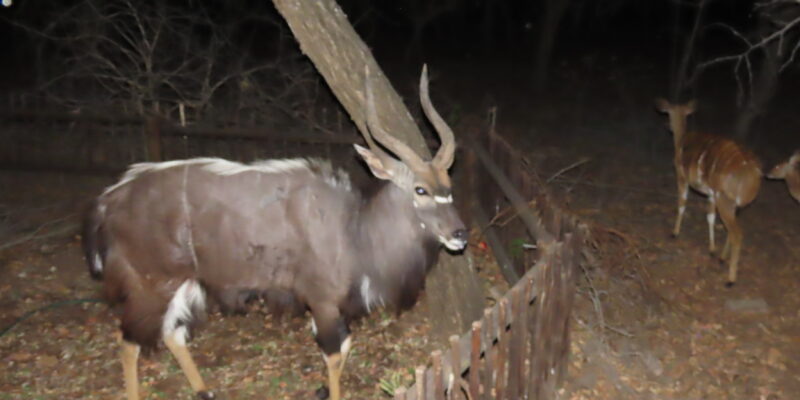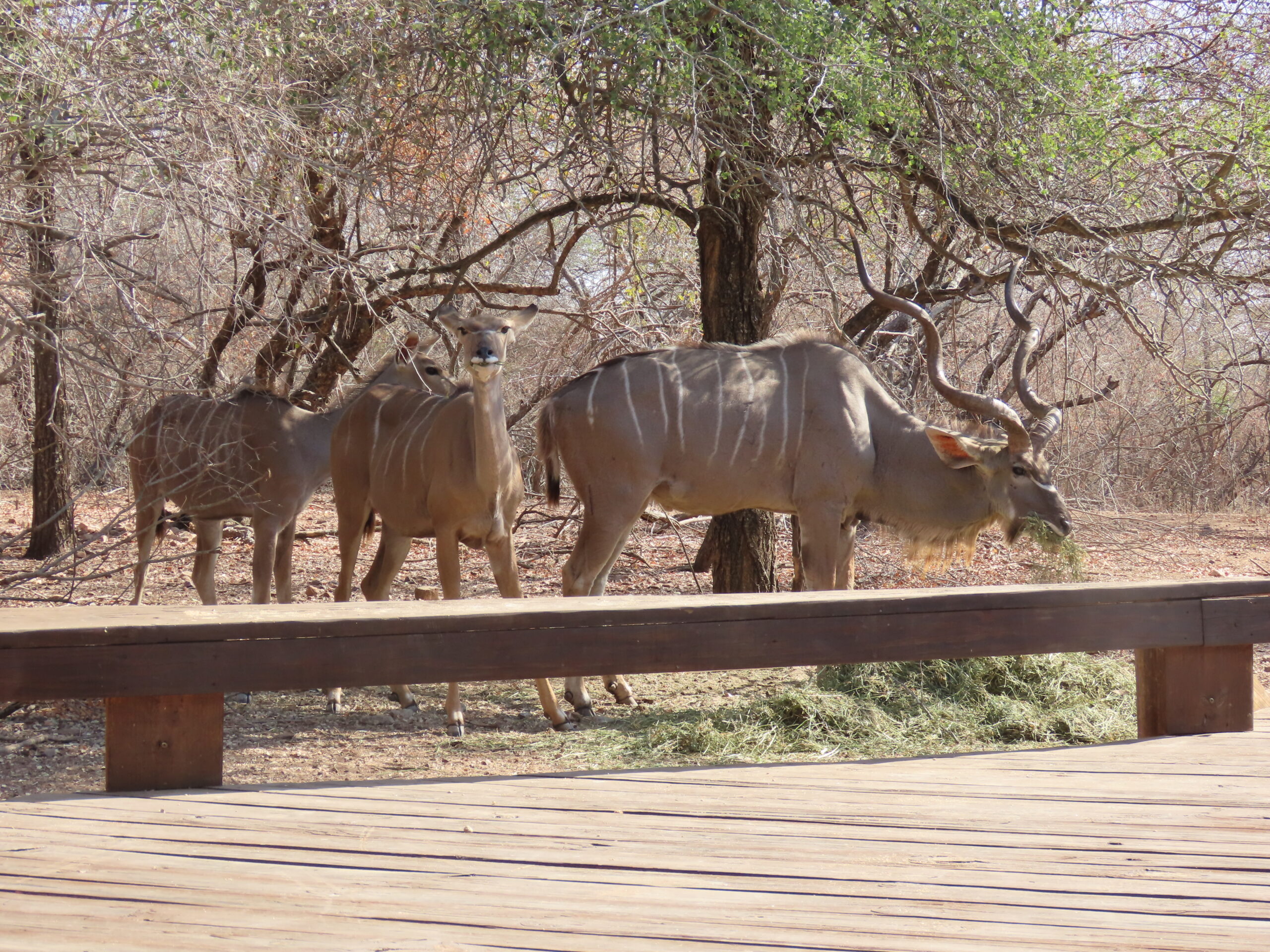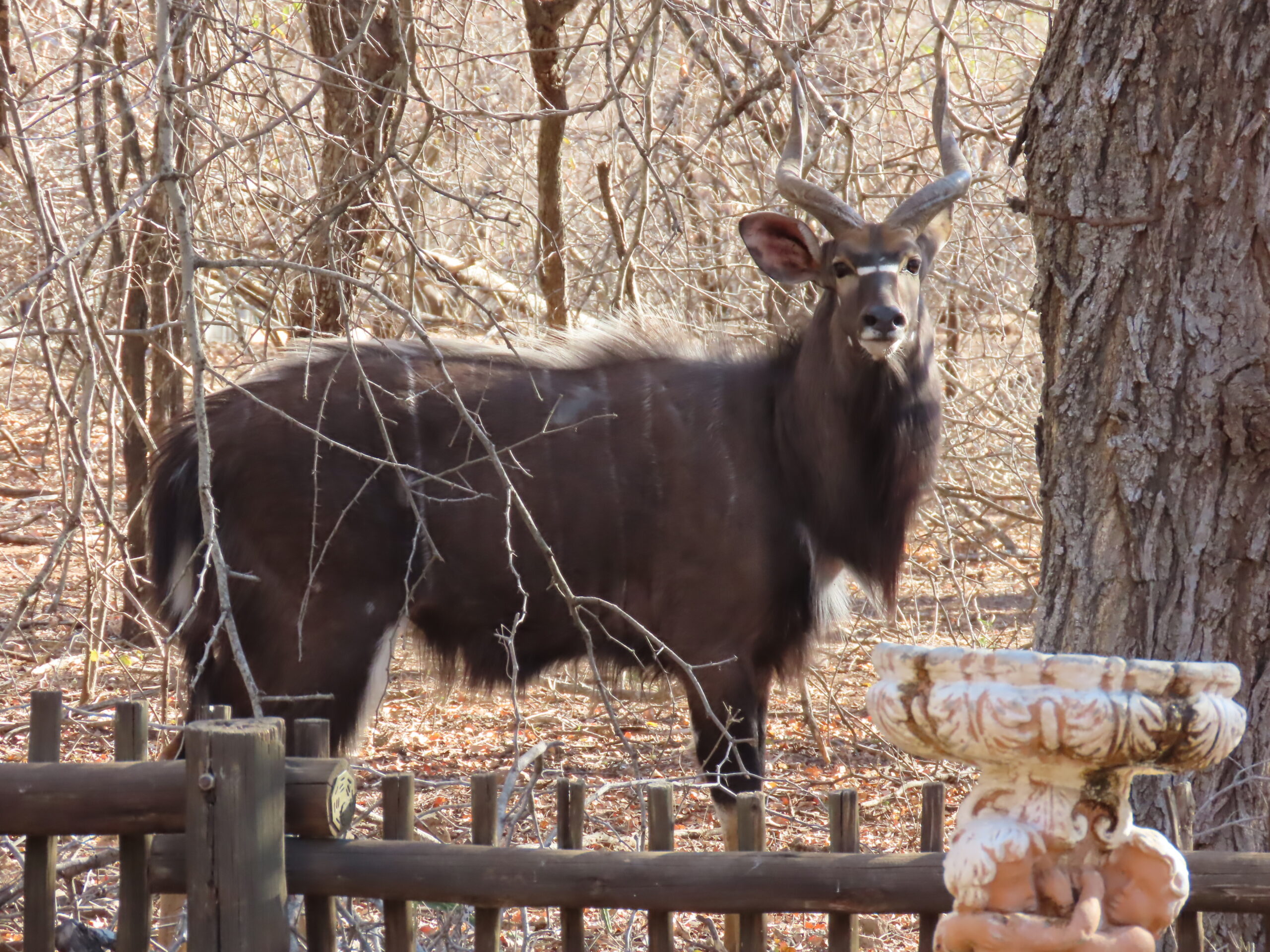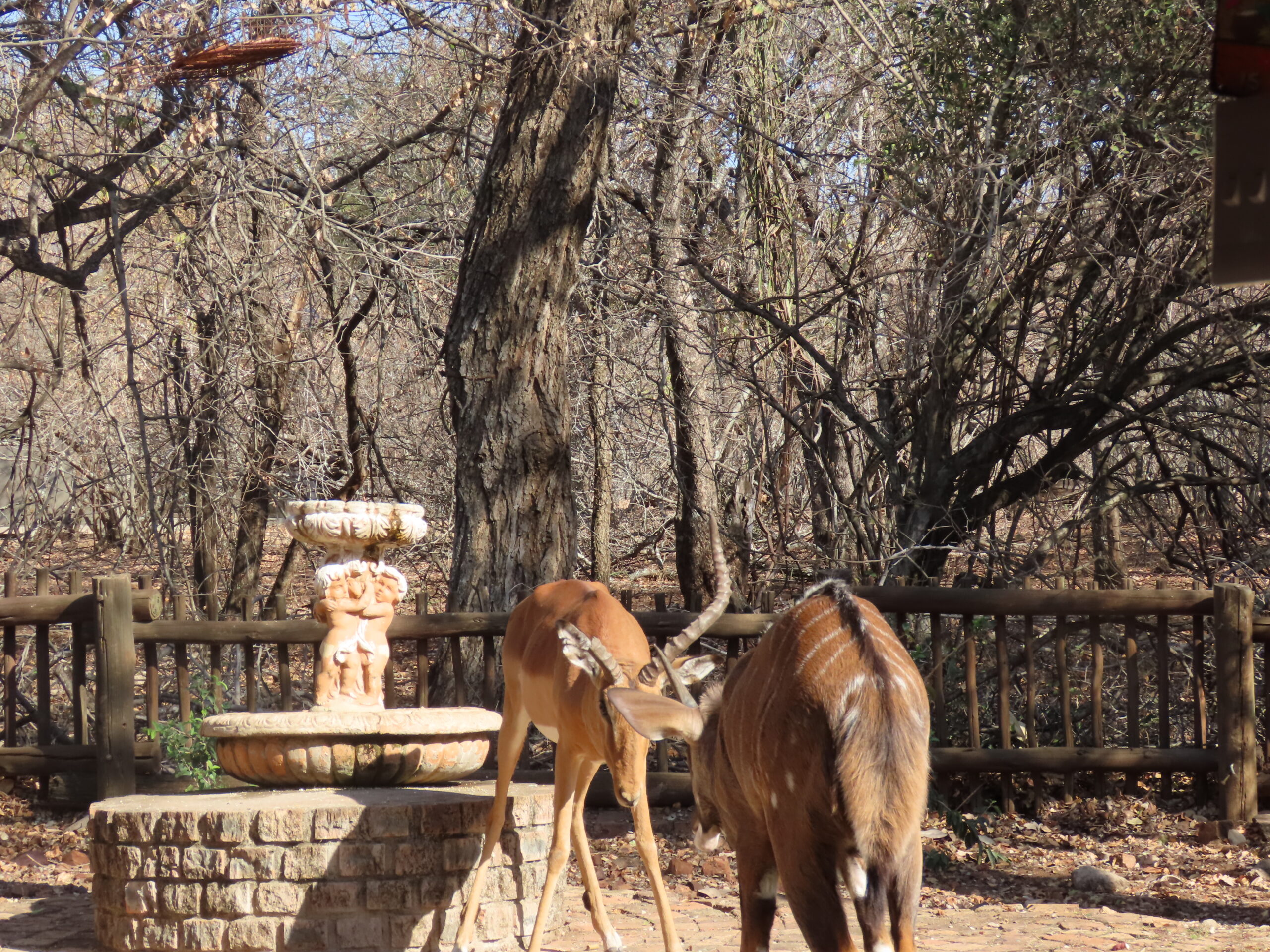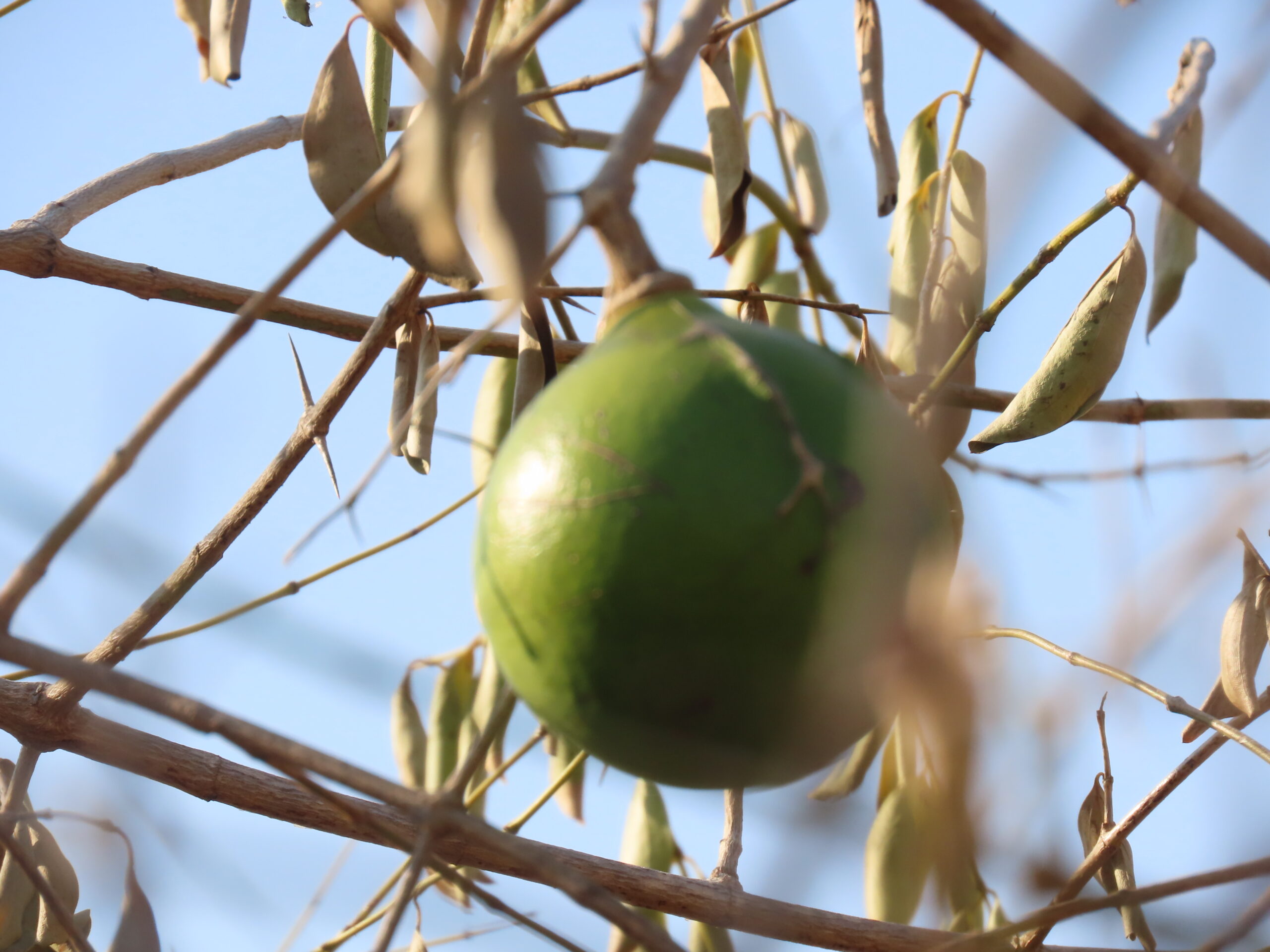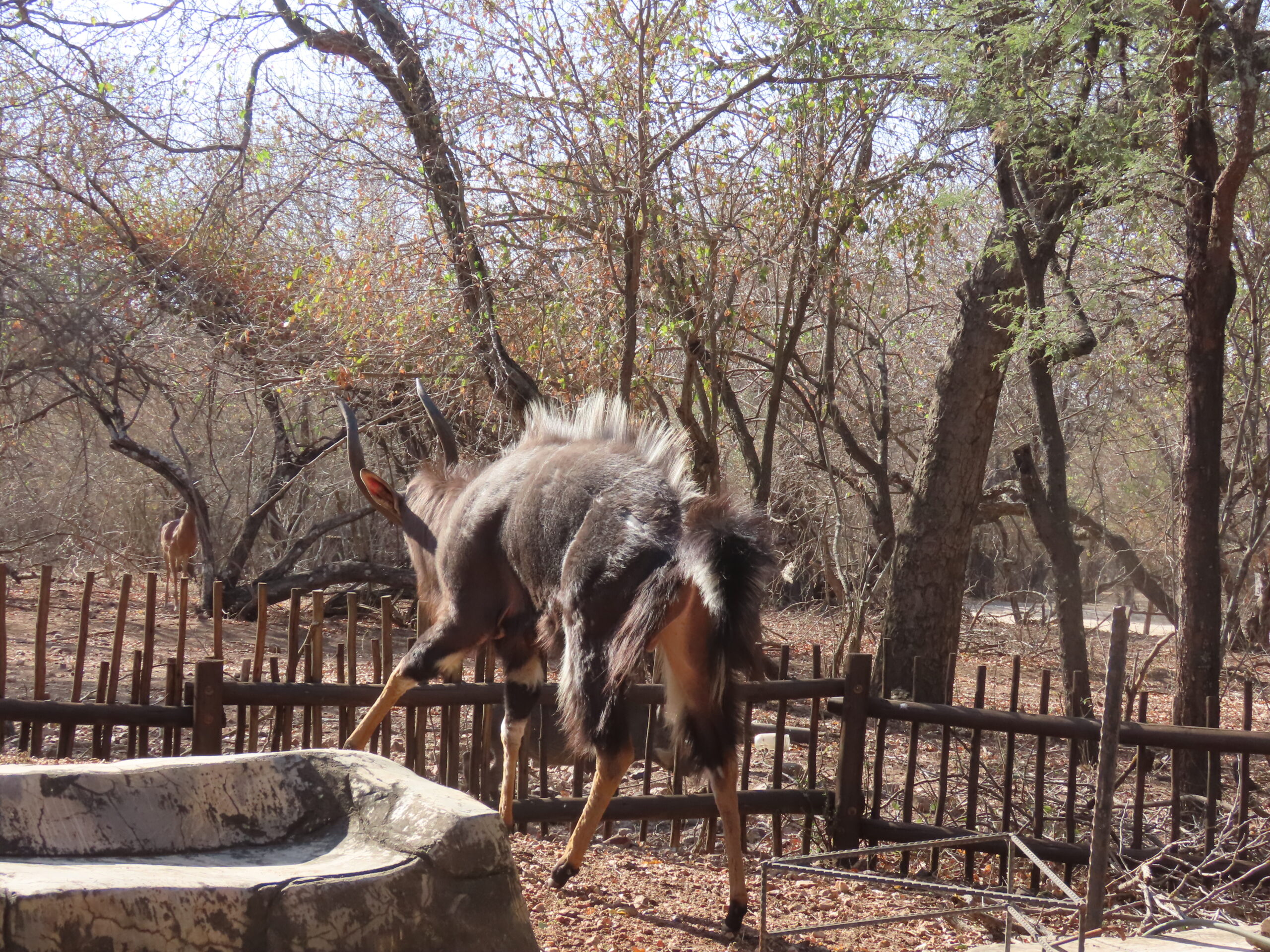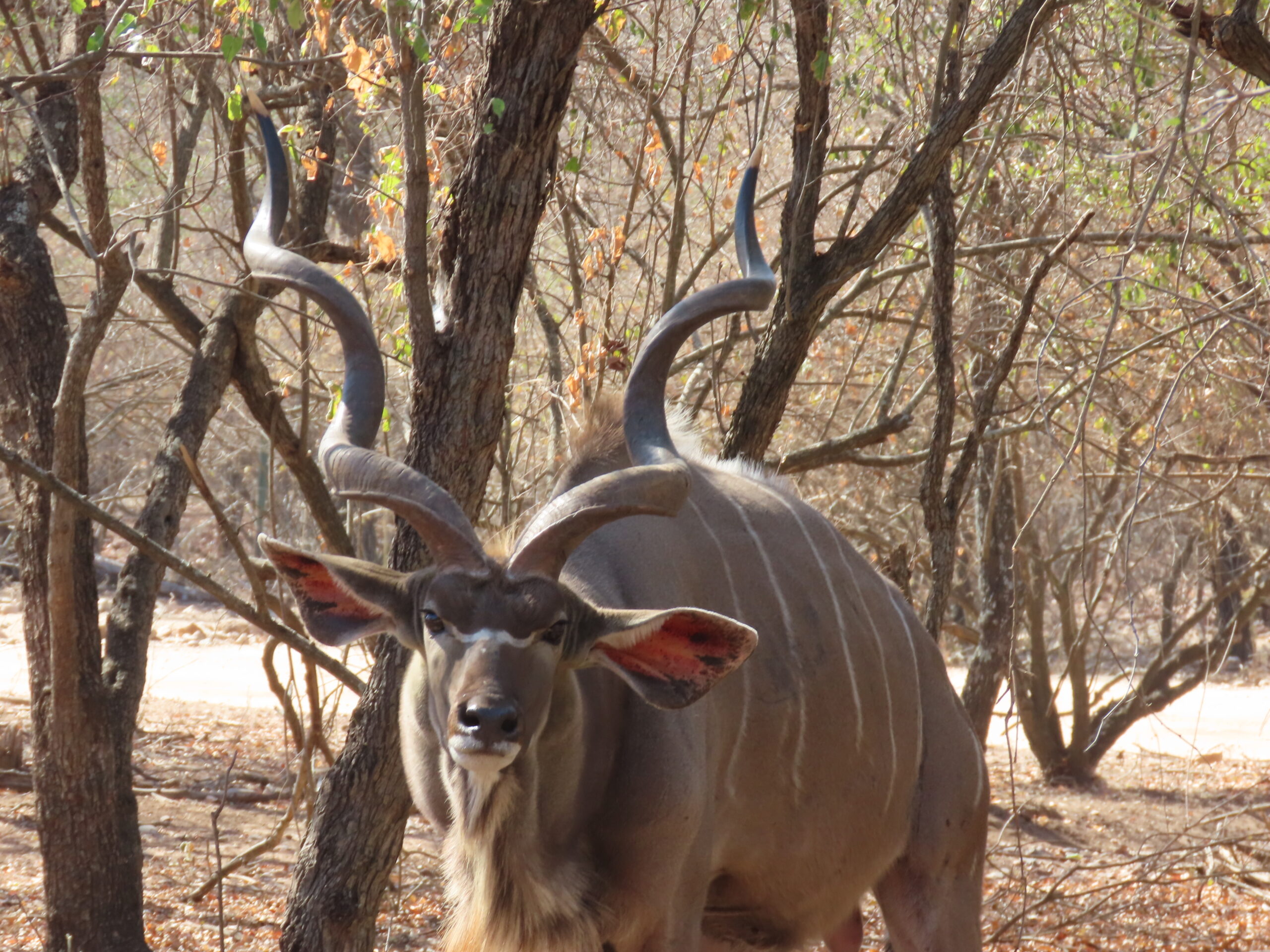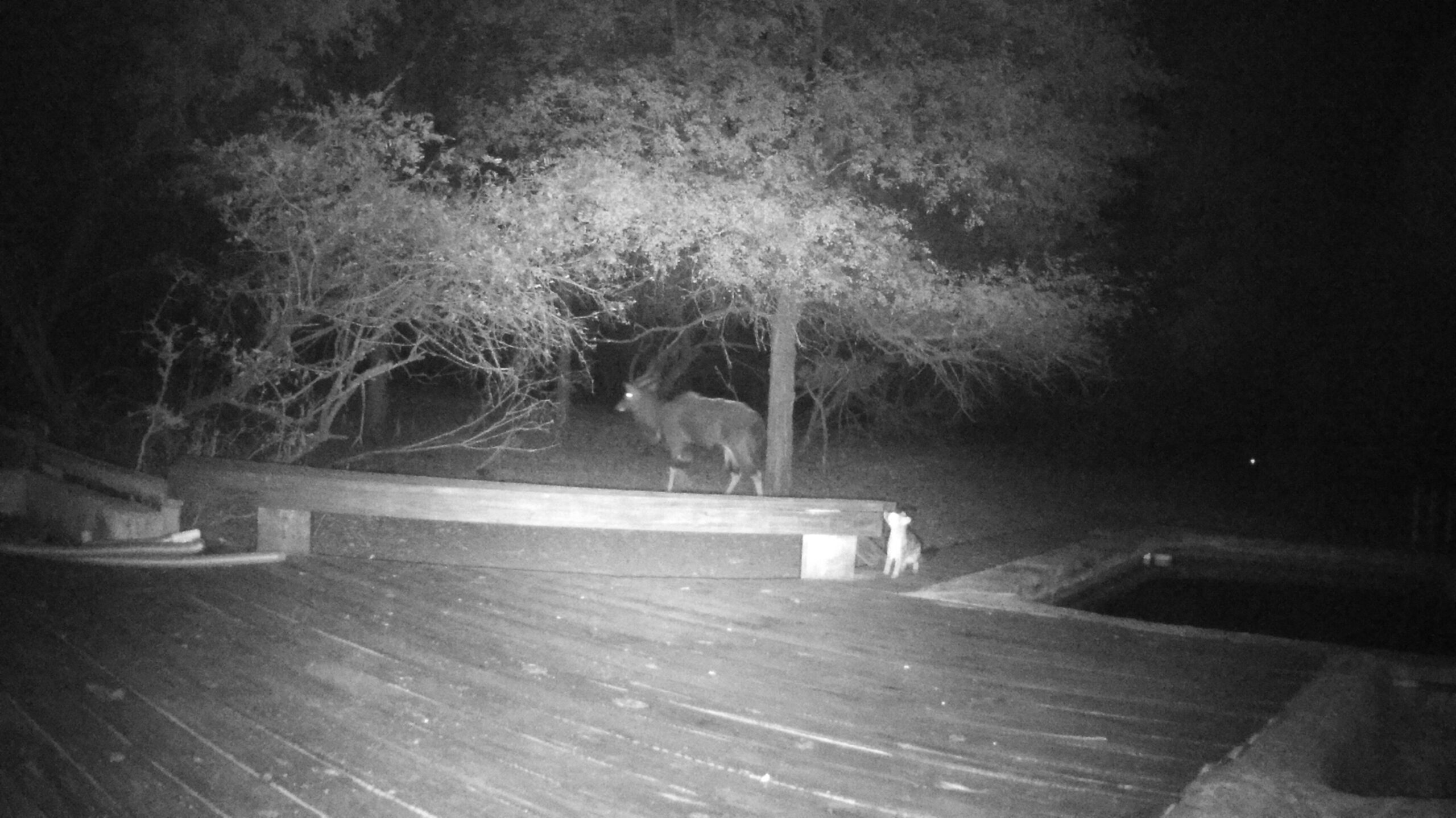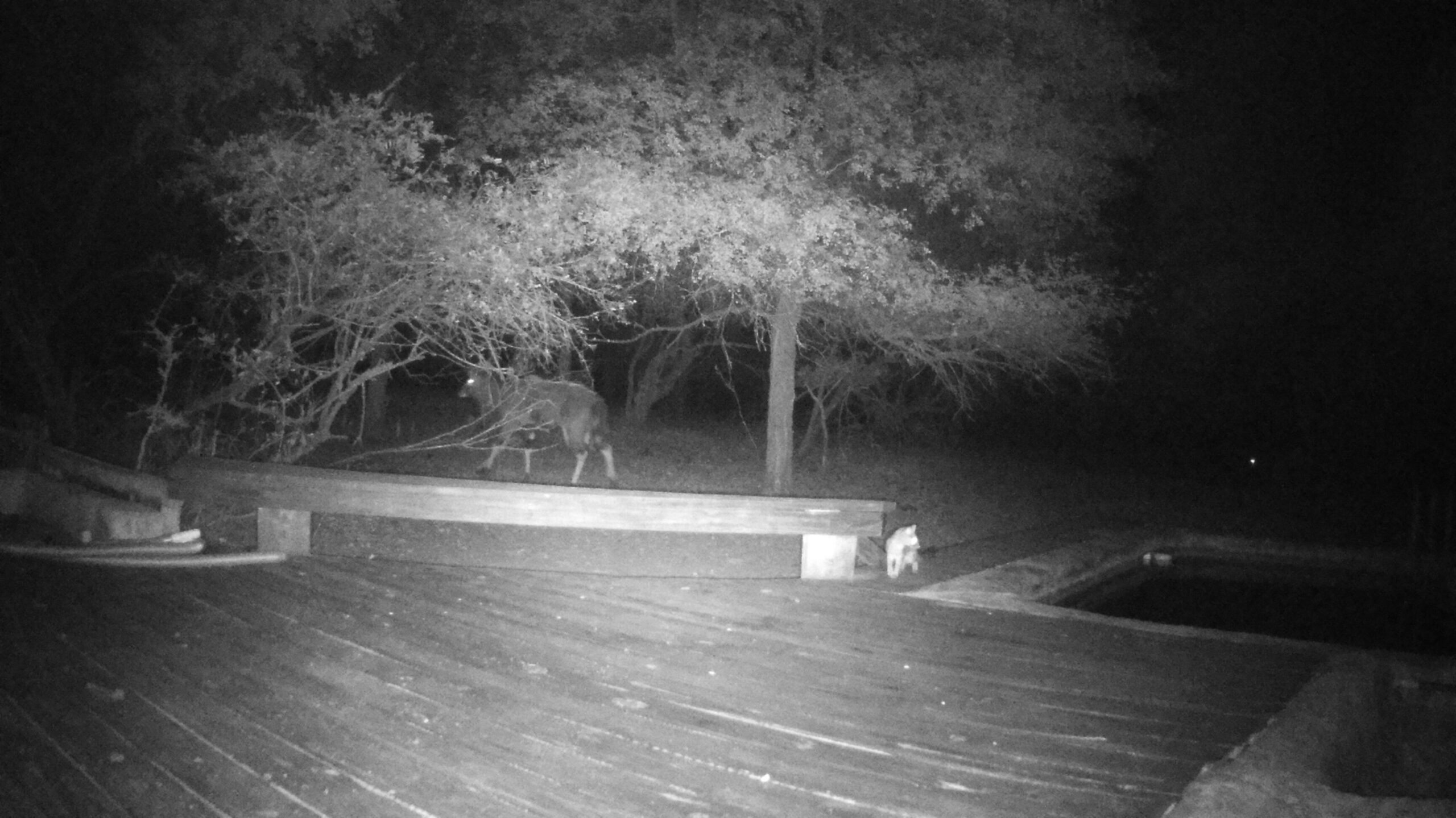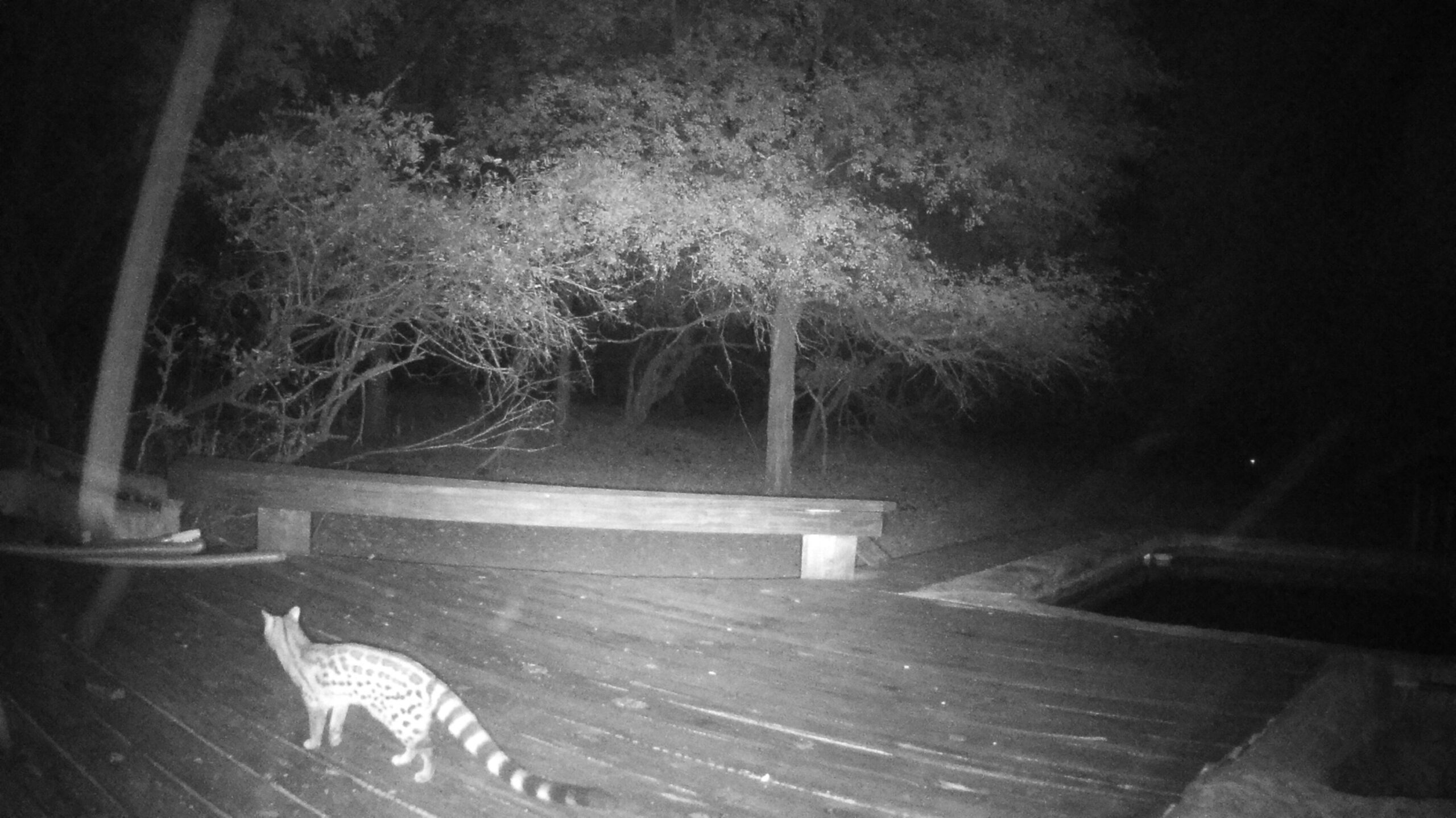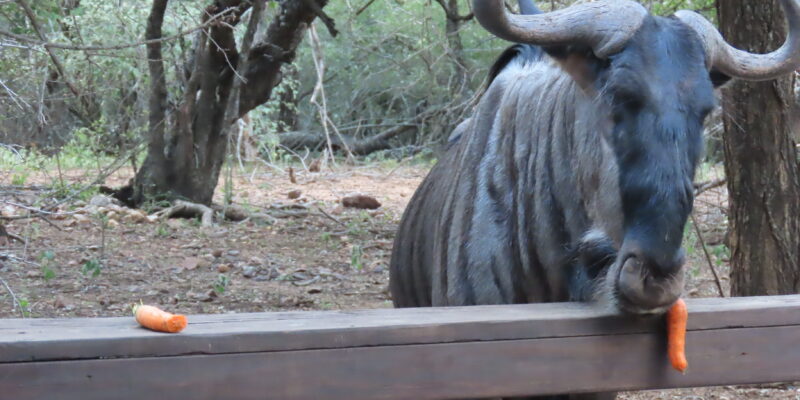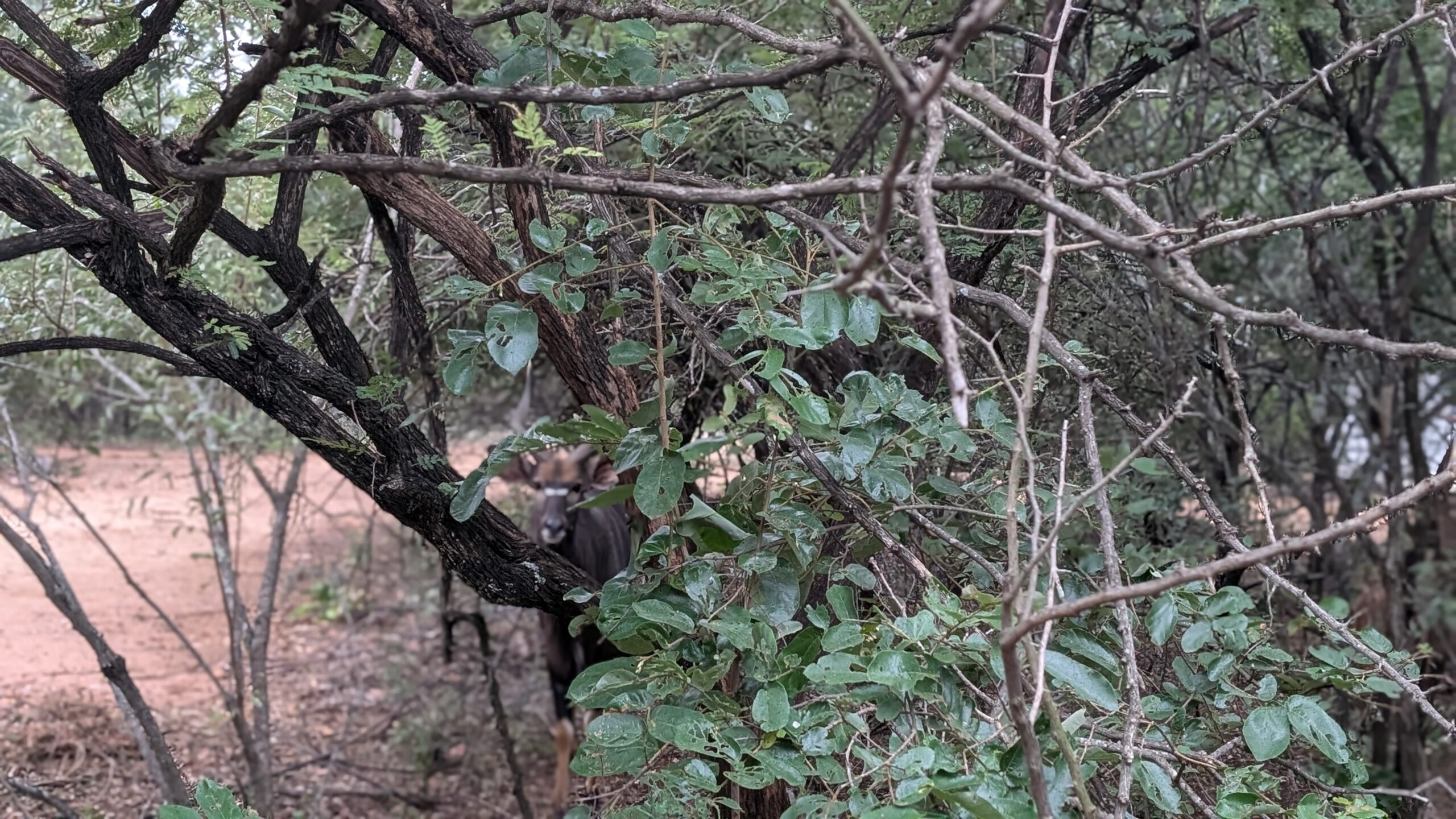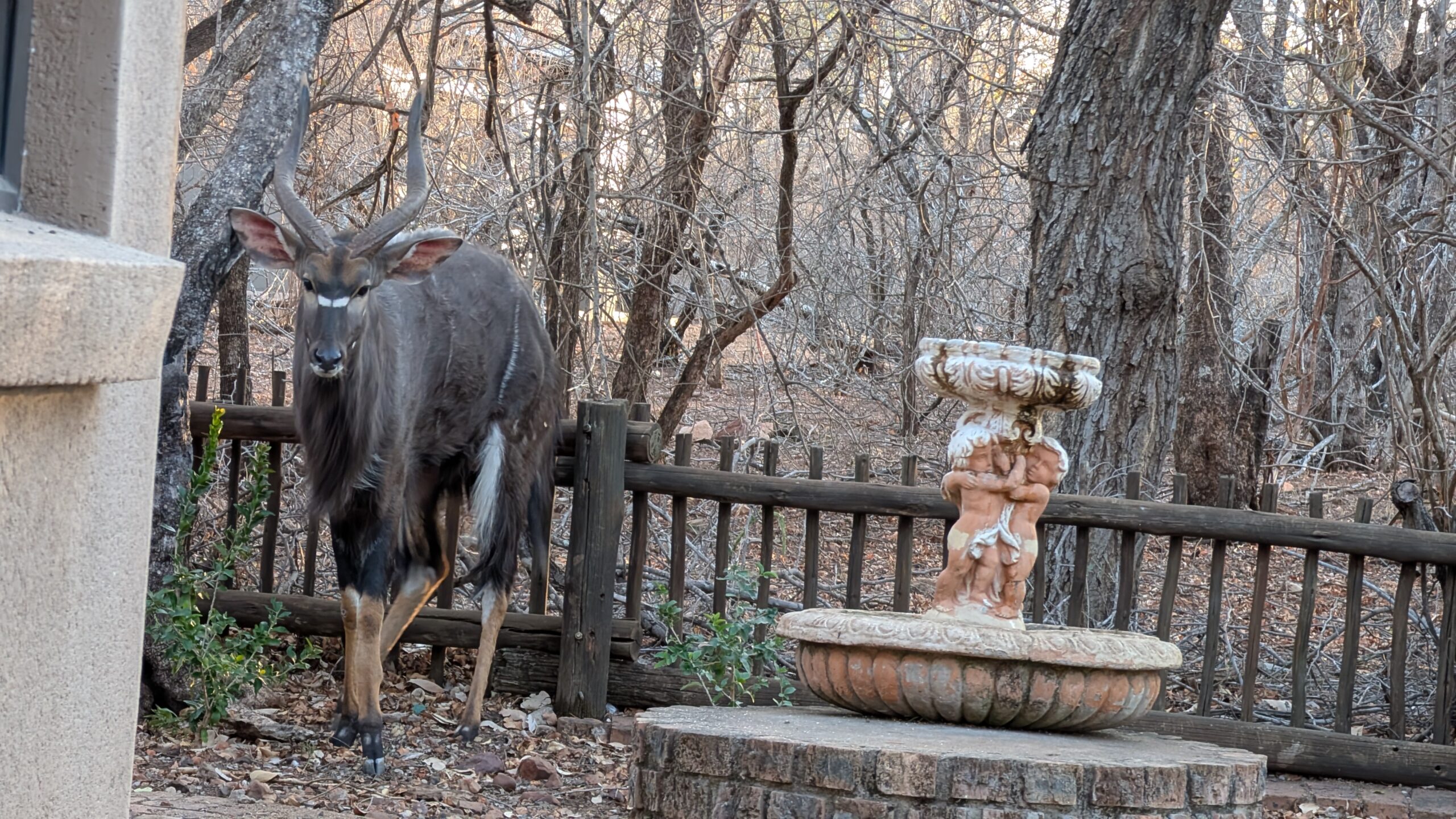
Almost six months have slipped through our fingers here in Marloth Park, South Africa, a place that has become much more than just a stop along our nomadic path. It has become a second home, a sanctuary of wild beauty, and a canvas where life has unfolded in colors more vivid than anywhere else we’ve lived. These past months have been our longest continuous stay in this little corner of the bush, and somehow, they’ve also been our richest. After almost five years of returning here season after season, it feels as though this visit has given us the deepest roots, even though we are, by nature, rootless travelers.
Every day, our garden has been alive with quiet magic. It is a strange and humbling thing to sip your morning coffee while a family of warthogs trots past the veranda, tails sticking straight up like little flags. Or to sit in the still of twilight as a bushbuck grazes so close you can hear the gentle crunch of dry leaves beneath its hooves. The soundscape here is unlike anywhere else: the grunts of wildebeest in the distance, the occasional roar from Kruger National Park drifting across the Crocodile River, the haunting whoop of hyenas breaking the night silence. All of it has wrapped itself around us, becoming the soundtrack of our days.
This stay, perhaps more than any before, has reminded us that the animals here are not just fleeting encounters to check off a list. They are neighbors, companions, and, in a way, teachers. Each has its rhythm, its patience, its way of existing in the unpredictable patterns of the bush. The zebras arriving in their striped splendor reminded us that beauty does not need adornment; it simply is. The impalas, delicate yet resilient, taught us that strength can be quiet. And the giraffes, with their graceful, unhurried steps, seemed to say that life is not meant to be rushed.
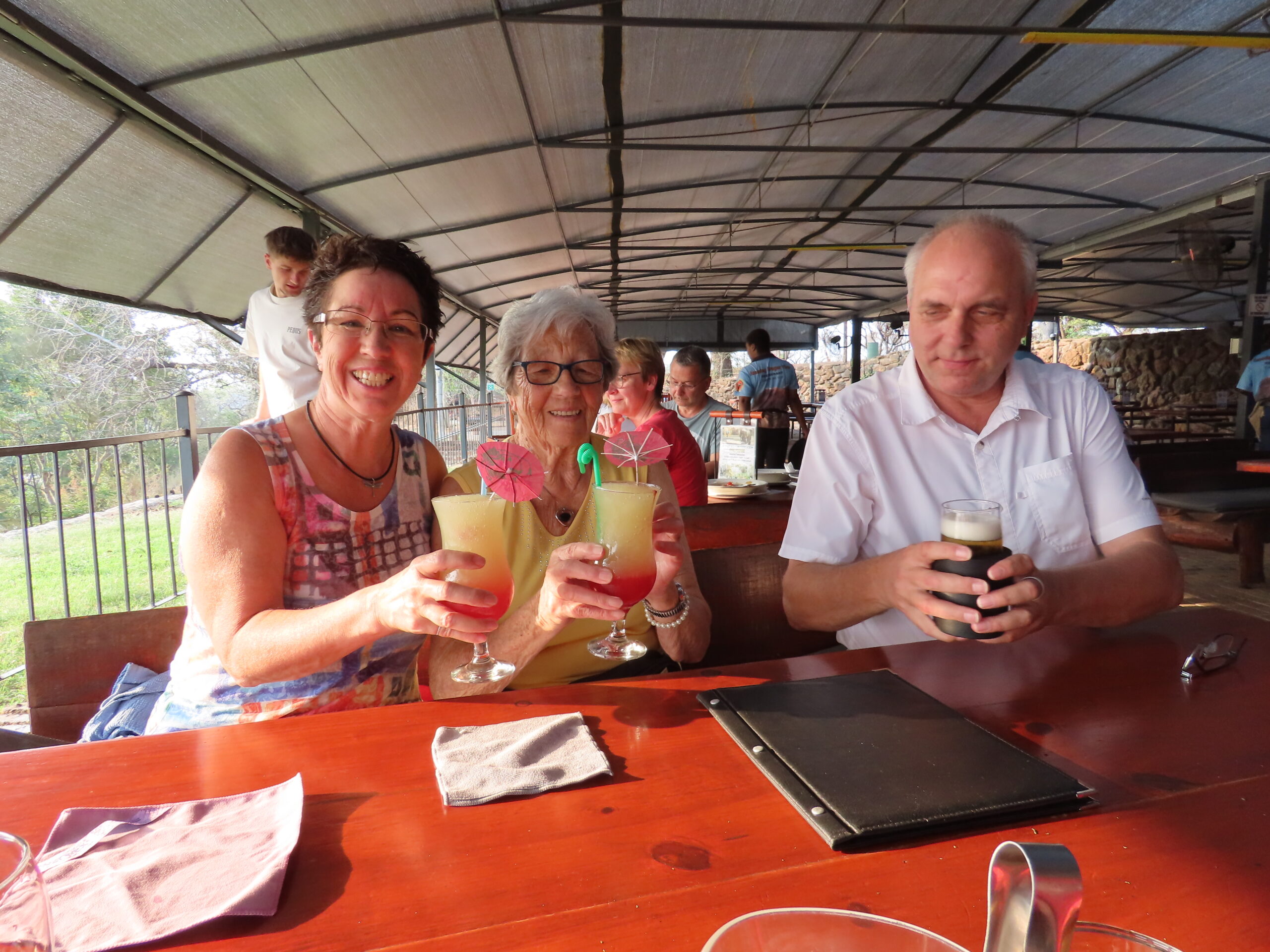
But it wasn’t just the wildlife that made these months so extraordinary. Marloth Park is also a community, one that somehow balances solitude and companionship in equal measure. Our calendar, usually light as travelers, filled up quickly with dinners, braais, sundowners, and endless conversations with people who, over time, have become some of our closest friends. There is something about sharing this unique environment that forges connections quickly. You cannot help but bond when you’ve watched elephants crossing the river together or laughed at the antics of mongooses racing through the garden.
We’ve celebrated birthdays, shared meals under star-studded skies, and lingered long into the night with people who have turned this once-strange place into something familiar and warm. In the bush, friendships seem to grow like marula trees—slowly, steadily, and with deep roots that withstand the passing seasons. And this time, those roots seemed to spread even wider, reminding us how grateful we are for the people we’ve come to know here.
It’s not lost on me that calling this “our best visit ever” is saying something. We’ve had so many memorable stays in Marloth Park before—each one filled with its own collection of stories and moments. But this time, the balance between solitude and social life felt just right. The wildlife visits were abundant and tender in ways we hadn’t exceptionally experienced before. The friendships felt deeper, the conversations richer. Perhaps it’s because we allowed ourselves to simply sink into the rhythm of life here, unhurried and present. Or perhaps, after years of wandering, we’ve learned how to savor it more fully.
And yet, as hard as it is to leave, that familiar pull of the road tugs at us again. There’s always a bittersweetness in packing up, knowing we’ll be trading giraffes for airplanes, warthogs for city streets, and the nightly loud sounds of tree frogs for the unpredictable noises of wherever we land next. But that’s the paradox of a nomadic life: you can love a place deeply, and still know it’s time to move on.
We step into the next year carrying all of this with us—the laughter around shared tables, the brush of a kudu’s presence at dawn, the fiery sunsets that painted the sky in streaks of orange and pink. These memories will be stitched into the fabric of our journey, carried along as we explore new landscapes and embrace new adventures. The road ahead is still a mystery, but we have learned to find comfort in that uncertainty.
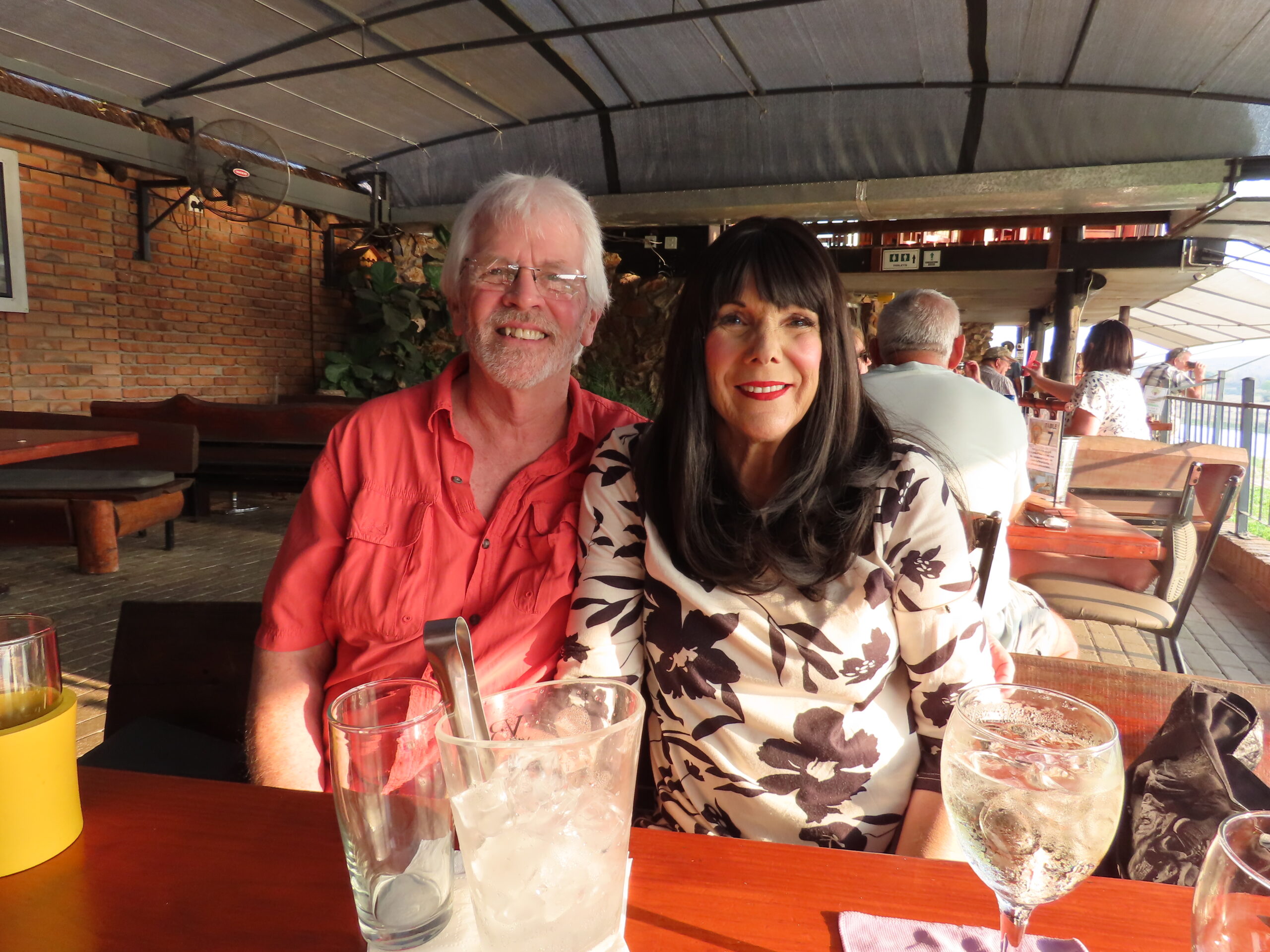
Leaving Marloth Park never gets easier. Every time, it feels like we’re leaving a part of ourselves behind, tucked into the dusty trails and acacia trees. But we also know that this place isn’t going anywhere—it will still be here, wild and welcoming, whenever we return. And return we will. For now, though, it’s time to open ourselves to what’s next, to the stories waiting to be lived in faraway corners of the world.
Six months in the bush have filled us with gratitude, perspective, and a renewed sense of wonder. As we close this chapter, I can’t help but feel that Marloth Park has given us its blessing to go—reminding us that, like the animals we’ve come to love, we too are meant to keep moving, keep seeking, keep wandering. And so, with full hearts, we say goodbye…for now.
Last night, at Jabula, we had the joy of meeting more of our long-time readers/friends face-to-face, Christine and Robert from Quebec, Canada. They’ve been reading our posts since 2012, when we first began documenting our nomadic lifestyle. They, too, have ventured out of their cozy retired existence to travel the world, and our shared stories made for exceptional conversation. We hope to see them again sometime in the future.
Before meeting up with Christine and Robert, we stopped to say goodbye to Louise and Danie, our dear friends and property owners/managers. How fortunate we are to have the friends we made over the almost 13 years of world travel.
Tonight we’ll spend our last evening with Rita, Gerhard, and Inge at Jabula, accompanied by friends/owners Dawn and Leon, and manager Corine. We’ll miss them all.
Be well.
Photo from ten years ago today, September 13, 2015:


